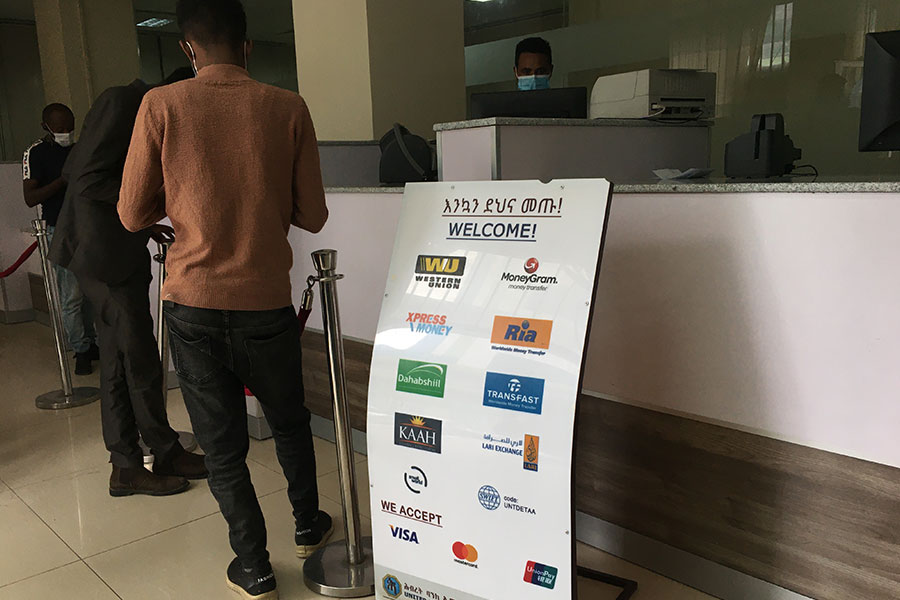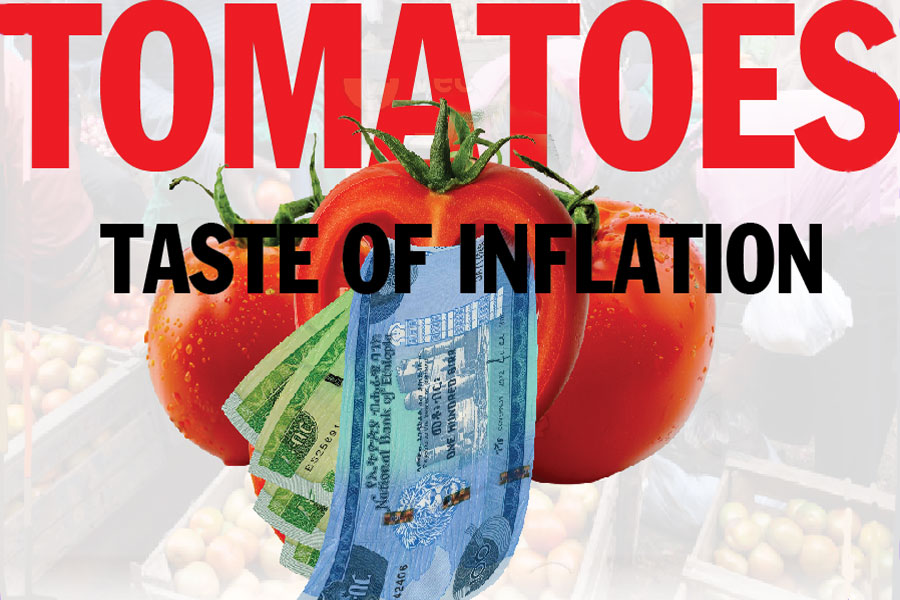
Fortune News | Jul 28,2024
Apr 29 , 2023
By Cristina Donini , Doreen Akiyo Yomoah
Over the past three years, the COVID-19 pandemic has dominated headlines and spurred scientific research, with experts around the world focusing resources and any potentially useful technology on the problem.
While the spotlight on COVID-19 has dimmed slightly, it remains a high global priority, sometimes to the detriment of infectious diseases linked to poverty and primarily affecting the Global South. For example, Malaria killed an estimated 619,000 people – most children in Sub-Saharan Africa – in 2021, when there were 247 million cases worldwide.
Malaria is an entirely preventable and treatable disease, and researchers have made great strides on both fronts. In March, for example, the World Health Organization (WTO) recommended two new dual-ingredient insecticide-treated bed nets to protect against malaria-transmitting Anopheles mosquitoes, one with a more lethal cocktail of insecticides and the other able to disrupt mosquito growth and reproduction.
Cost-effective antimalarial medicines are another important tool. In 2021, seasonal malaria chemoprevention was administered to around 45 million children aged three months to five years, who received monthly doses of therapeutic drugs at less than four dollars per person. The recent news of a groundbreaking vaccine, GSK's Mosquirix (also known as RTSS), offers some hope, although the cost is still relatively high, at around 40 dollars a child for the first year.
Despite these efforts, malaria continues to pose a threat to public health.
Even after an investment of 26 billion dollars to tackle the disease in Sub-Saharan Africa, the number of cases increased slightly between 2000 and 2019 (although the number of deaths decreased). New prevention measures – tailored to children, in particular – are needed. Further innovation should take a page from the pandemic playbook: one benefit of the flood of COVID-19 research is that it demonstrated the enormous potential of monoclonal antibodies.
These drugs are laboratory-made copies of the proteins that a person's immune system produces to attack specific foreign invaders. Historically, monoclonal antibodies have been a powerful weapon against cancer and autoimmune diseases such as rheumatoid arthritis and lupus. While not often used as a prophylactic, the deployment of monoclonal antibodies to prevent COVID-19 and the respiratory syncytial virus has shown great promise.
Moreover, their exquisite selectivity enables them to discern between closely related molecular targets, resulting in fewer off-target effects. This makes it a medication with an appropriate safety profile for children (as well as other at-risk populations).
A research group at the United States National Institutes of Health, led by Robert Seder, has identified two antibodies against CSP-1, the malaria parasite's protein, to invade liver cells where it first establishes infection. Blocking CSP-1 should thus prevent infection. The more advanced of the two antibodies, L9LS, is currently being tested for its safety and efficacy in children in Mali and Kenya.
The Mali study assesses its success in a setting of seasonal malaria, whereas the Kenya study focuses on an area where year-round infection is possible.
Monoclonal antibodies could be a game-changer for preventing malaria and advancing the long-sought goal of eradication.
The current generation of antimalarial antibodies has been modified so that a single dose can protect a child for at least three months – possibly longer. The clinical trials will determine the extent and exact duration of protection, and provide useful guidance on how much improvement is needed to achieve a dosage that can be injected once per year.
Although antibodies have a reputation for being expensive, with those used to treat cancer priced at over 20,000 dollars a month in Europe and the US, increasing the potency of this cutting-edge treatment could significantly decrease costs. Some believe an injection as small as one millilitre of the antibody drug being trialled in Mali and Kenya could protect children at the cost of only five to 10 dollars per person.
Demand for monoclonal antibodies primarily comes from high-income countries; Africa accounts for only one percent of global sales. This disparity highlights the need to work with national regulatory agencies to ensure that submitted product data adequately address public health concerns and, in the longer term, involve affected countries in producing these biologics.
Although manufacturing antibodies is a complex and highly regulated process, investing in the technology now would be a boon for developing economies burdened by endemic malaria.
Monoclonal antibodies may be the new frontier in the fight against malaria, but getting the word out won't be easy: stakeholders from government, academia, and industry must come together to coordinate advocacy efforts and raise awareness. (The same groups should encourage the development of these biologics for all infectious diseases.)
We are embarking on a long road: the first generation of antimalarial antibodies will not be deployed until 2027. They offer tremendous promise as one of many weapons to fight this child killer, alongside bed nets, medicines, and emerging vaccines.
The clinical trials will tell us whether this potential can be realized, but we would be wise to begin preparing for success now.
PUBLISHED ON
Apr 29,2023 [ VOL
24 , NO
1200]

Fortune News | Jul 28,2024

Agenda | Dec 01,2024

Verbatim | Nov 04,2023

Commentaries | Nov 18,2023

Commentaries | Feb 10,2024

Fortune News | May 13,2023

Fortune News | May 06,2023

Money Market Watch | Nov 09,2024

Radar | May 02,2020

Agenda | Apr 24,2021

Photo Gallery | 174727 Views | May 06,2019

Photo Gallery | 164949 Views | Apr 26,2019

Photo Gallery | 155187 Views | Oct 06,2021

My Opinion | 136719 Views | Aug 14,2021
Editorial | Oct 11,2025

Dec 22 , 2024 . By TIZITA SHEWAFERAW
Charged with transforming colossal state-owned enterprises into modern and competitiv...

Aug 18 , 2024 . By AKSAH ITALO
Although predictable Yonas Zerihun's job in the ride-hailing service is not immune to...

Jul 28 , 2024 . By TIZITA SHEWAFERAW
Unhabitual, perhaps too many, Samuel Gebreyohannes, 38, used to occasionally enjoy a couple of beers at breakfast. However, he recently swit...

Jul 13 , 2024 . By AKSAH ITALO
Investors who rely on tractors, trucks, and field vehicles for commuting, transporting commodities, and f...

Oct 11 , 2025
Ladislas Farago, a roving Associated Press (AP) correspondent, arrived in Ethiopia in...

Oct 4 , 2025
Eyob Tekalegn (PhD) had been in the Governor's chair for only weeks when, on Septembe...

Sep 27 , 2025
Four years into an experiment with “shock therapy” in education, the national moo...

Sep 20 , 2025
Getachew Reda's return to the national stage was always going to stir attention. Once...

Oct 12 , 2025
Tomato prices in Addis Abeba have surged to unprecedented levels, with retail stands charging between 85 Br and 140 Br a kilo, nearly triple...

Oct 12 , 2025 . By BEZAWIT HULUAGER
A sweeping change in the vehicle licensing system has tilted the scales in favour of electric vehicle (EV...

A simmering dispute between the legal profession and the federal government is nearing a breaking point,...

Oct 12 , 2025 . By NAHOM AYELE
A violent storm that ripped through the flower belt of Bishoftu (Debreziet), 45Km east of the capital, in...